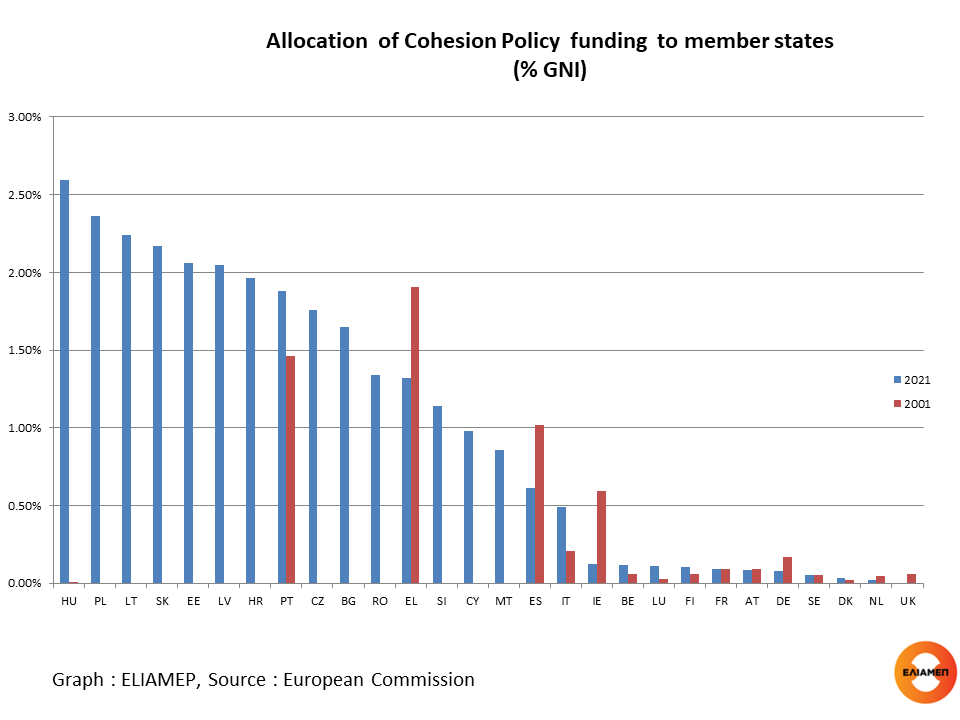The promotion of economic and social cohesion, i.e. the reduction of economic disparities between the member states and the various regions within them, is one of the central objectives of the EU. In the period 2021-2027 funds allocated to Cohesion Policy amount to EUR 392 billion. With the national co-financing, about half a trillion euro will be available to finance the programmes in the EU regions and countries.
Since the mid-1980s, the specific weight of cohesion policy in the EU budget has increased. Historically, the reason for this has been the belief that increasing the support towards less competitive regions will counterbalance the negative consequences of economic integration.
There are two points of attention. First, cohesion policy is not a classic ‘welfare policy’: EU subsidies are primary spent on infrastructure projects and programs to upgrade human capital with the aim of improving competitiveness of the recipient regions. For example, cohesion policies in the period 2021-2027 will be guided by five main objectives which include -among others- projects on climate, strategic networks, innovation and digitalisation, employment and healthcare, and sustainable urban development. Second, cohesion policy does not only benefit the poor Member States: it is a regional policy, and the objectives are designed in such a way that every member state can claim to have a region which qualifies for aid from one of the different structural funds. In particular, funds from the ERDF and ESF+ are allocated in three categories of regions (less developed, more developed, in transition), some countries benefit from the Cohesion Fund, some regions with specific needs receive dedicated funding (outermost regions and sparsely populated), and all countries benefit from the Just Transition Fund.
In 2001, the largest beneficiaries of structural funds in absolute terms were Spain (7 billion), Germany (3.5 billion), and Greece (2.9 billion). As a percentage of gross national income, Greece (1.9%) was in first place, while Portugal (1.5%), Spain (1%) and Ireland (0.6% of gross national income), the “cohesion countries”, followed at some distance.
The 2004 enlargement brought major changes to the ranking. From now on, one in three EU citizens would live in one of the less developed convergence regions. As expected, since then the share of the four traditional “cohesion countries” has been continuously decreasing, while the share of the new Member States has been increasing. In 2021, the top beneficiaries were Hungary (2.6% of gross national income), Poland (2.4%), Lithuania (2.2%), and Slovakia (2.2%). Greece was in 12th place (1.3% of gross national income). In last place, the Netherlands received cohesion funds corresponding only to 0.02% of its gross national income.
The extent to which cohesion policy has reduced social and economic disparities in the Union is open to question. Greece, since 1981 when it joined the then EEC, has been particularly favored by the Structural Funds and Cohesion Policy. Even today, despite the enlargements, and due to the sharp decrease of public investments after 2010, 80% of public investments in Greece are co-financed.




